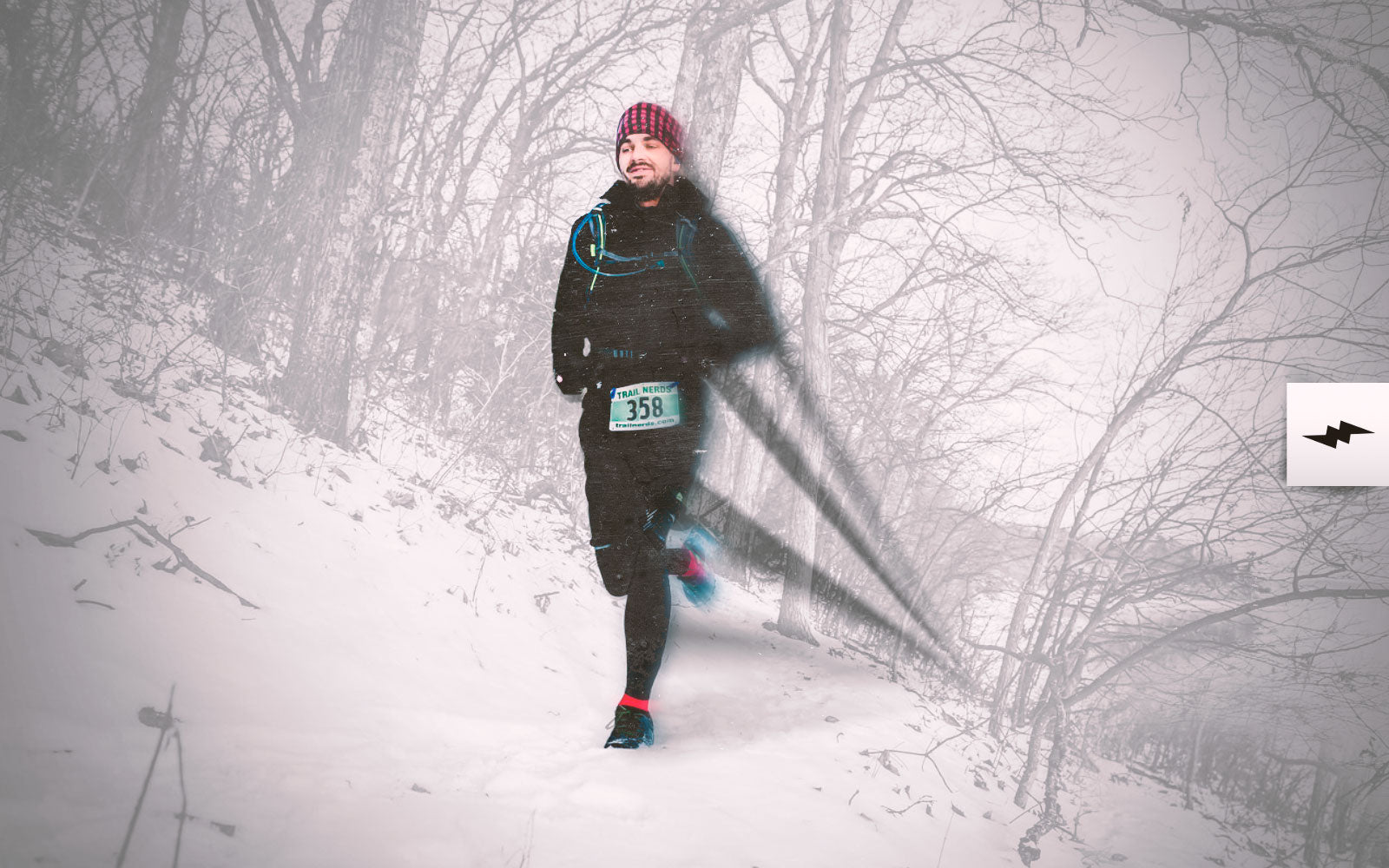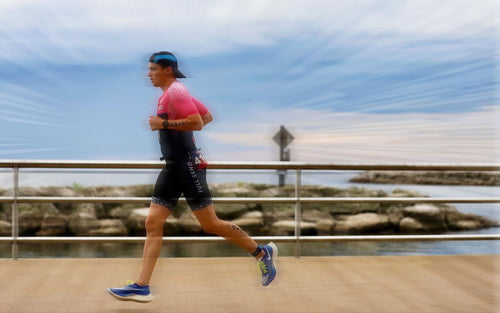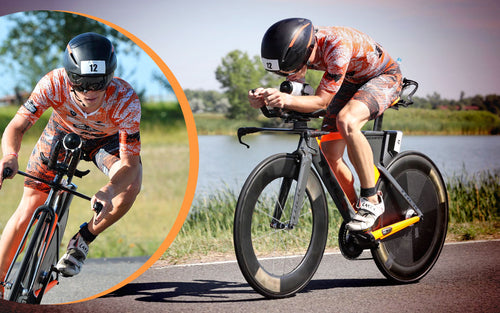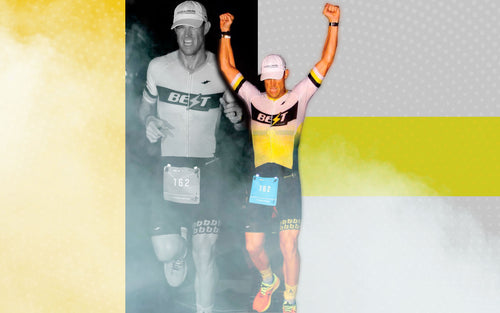Is Trail Running Good For Triathletes?

Triathlon training can become quite obsessive. There are so many apps available for measuring your bike sessions, your runs and your swims, then plotting your times and percentage improvements over time. We can become so distracted by the numbers that we forget about the fun. Maybe it’s time to get away from all the numbers and the technology and look at the benefits you can get from getting back to nature and adding some trail running to your training.
The majority of trails incorporate hills which will make you a stronger running. The undulating terrain means that nature imposes its own fartlek training and requires you to engage more muscle groups than road running, in order to keep your balance over rough terrain. The softer surfaces of trail running are also kinder on your joints and simply being in nature has a positive effect on mental health.
Hills To Make You Stronger
While trail running does not have to include hills – the beauty is that you can create your own routes – elevation gains are a key feature of most trail running routes. A moderate trail is described as a 16-mile round trip with an elevation gain of 2000-3000 feet. Compare this against the Puerto Rico Half-Ironman which is considered ‘Hilly’ by Ironman standards; the total elevation gain is just 644 feet over 21 km.
Hill runs will strengthen everything from your hip flexors to your calf muscles faster than running on a flat surface. Dedicate some training time to trail running and you will soon be wondering where the hills are on ‘hilly’ Ironman courses.
Naturally Dictated Fartlek Training
‘Fartlek’ is a Swedish term meaning ‘Speed Play’ and is a training method which is built around varying the speed and intensity at which you train. This type of training can be manufactured when road-running by simply setting alarms to signify when to increase, or decrease, your efforts. Fartlek training has been shown to have a ‘significant improvement on muscular endurance’ among cross-country runners.
The advantage of trail running is that nature imposes its own Fartlek training. The natural inclines and declines, along with the variation in the terrain itself, means that your body has to constantly adapt to the conditions of the trail. Unlike road-running, you cannot simply set your body on autopilot and keep a steady pace throughout your run. This variation in speeds and intensities not only improves muscular endurance, but also means a more interesting run for you.
More Muscle Groups Engaged

Climbing hills, negotiating steep declines, avoiding trees and sidestepping tree routes means that you will be asking more muscle groups to come to the party. In particular, those muscle groups required for balance will be heavily utilized in trail running. The benefit to us is that, as the supporting muscles and ligaments around the joints become stronger we build up more resistance to injuries.
If you head out for some of the more extreme trails, then you may also find that there is a bit of clambering over rocks and using trees as support for a speedy decent. All of this means that your upper-body will also get a fair workout as a by-product of trail running.
Frees Your Mind

If we think about what it is that makes us feel anxious, or stressed then it is likely to be things that have happened in the past, or things that are yet to happen in the future. When we are able to be fully present in the moment it creates a space for us to be free; a space for our brains to shut off regrets and worries.
Studies show that running can reduce stress and anxiety and can even help with cases of depression. While all types of running are beneficial, trail-running forces you to be fully in the moment. If you are trying to negotiate a steep downhill section of loose stones then there is very little time to be drifting off into thinking about next week’s business presentation!
Final Thoughts
Road-running will always be an important part of triathlon training, because the run legs of most triathlons are road-based. This does not mean, however, that all our training needs to consist of pounding the pavements. There is a whole world of trail-running out there that we can mix into our training in order to become better all-round athletes. So why not give it a go? At the very worst you will have a trip out of the city and the opportunity to get back to nature for a few hours.
Written for Innerforce by Stewart Spiessens
Photos. @cant.be.what.you.were

Triathlon training can become quite obsessive. There are so many apps available for measuring your bike sessions, your runs and your swims, then plotting your times and percentage improvements over time. We can become so distracted by the numbers that we forget about the fun. Maybe it’s time to get away from all the numbers and the technology and look at the benefits you can get from getting back to nature and adding some trail running to your training.
The majority of trails incorporate hills which will make you a stronger running. The undulating terrain means that nature imposes its own fartlek training and requires you to engage more muscle groups than road running, in order to keep your balance over rough terrain. The softer surfaces of trail running are also kinder on your joints and simply being in nature has a positive effect on mental health.
Hills To Make You Stronger
While trail running does not have to include hills – the beauty is that you can create your own routes – elevation gains are a key feature of most trail running routes. A moderate trail is described as a 16-mile round trip with an elevation gain of 2000-3000 feet. Compare this against the Puerto Rico Half-Ironman which is considered ‘Hilly’ by Ironman standards; the total elevation gain is just 644 feet over 21 km.
Hill runs will strengthen everything from your hip flexors to your calf muscles faster than running on a flat surface. Dedicate some training time to trail running and you will soon be wondering where the hills are on ‘hilly’ Ironman courses.
Naturally Dictated Fartlek Training
‘Fartlek’ is a Swedish term meaning ‘Speed Play’ and is a training method which is built around varying the speed and intensity at which you train. This type of training can be manufactured when road-running by simply setting alarms to signify when to increase, or decrease, your efforts. Fartlek training has been shown to have a ‘significant improvement on muscular endurance’ among cross-country runners.
The advantage of trail running is that nature imposes its own Fartlek training. The natural inclines and declines, along with the variation in the terrain itself, means that your body has to constantly adapt to the conditions of the trail. Unlike road-running, you cannot simply set your body on autopilot and keep a steady pace throughout your run. This variation in speeds and intensities not only improves muscular endurance, but also means a more interesting run for you.
More Muscle Groups Engaged

Climbing hills, negotiating steep declines, avoiding trees and sidestepping tree routes means that you will be asking more muscle groups to come to the party. In particular, those muscle groups required for balance will be heavily utilized in trail running. The benefit to us is that, as the supporting muscles and ligaments around the joints become stronger we build up more resistance to injuries.
If you head out for some of the more extreme trails, then you may also find that there is a bit of clambering over rocks and using trees as support for a speedy decent. All of this means that your upper-body will also get a fair workout as a by-product of trail running.
Frees Your Mind

If we think about what it is that makes us feel anxious, or stressed then it is likely to be things that have happened in the past, or things that are yet to happen in the future. When we are able to be fully present in the moment it creates a space for us to be free; a space for our brains to shut off regrets and worries.
Studies show that running can reduce stress and anxiety and can even help with cases of depression. While all types of running are beneficial, trail-running forces you to be fully in the moment. If you are trying to negotiate a steep downhill section of loose stones then there is very little time to be drifting off into thinking about next week’s business presentation!
Final Thoughts
Road-running will always be an important part of triathlon training, because the run legs of most triathlons are road-based. This does not mean, however, that all our training needs to consist of pounding the pavements. There is a whole world of trail-running out there that we can mix into our training in order to become better all-round athletes. So why not give it a go? At the very worst you will have a trip out of the city and the opportunity to get back to nature for a few hours.
Written for Innerforce by Stewart Spiessens
Photos. @cant.be.what.you.were
SEE WHAT CUSTOM APPAREL LOOKS LIKE

GEAR UP
MORE FROM THE BLOG

The Perfect Balance: Crafting a Comprehensive Triathlon Training Plan

The Power of Custom Athletic Apparel: Boost Your Performance and Confidence

Triathlon Training 101: Proven Strategies for Avoiding Injuries




